Every year, I have a BBQ to help raise money for The Ottawa Mission. They are a organization that is very near and dear to my heart. Amongst other things, they dedicate themselves to making sure no one goes hungry. They have a kitchen that is open for three meals a day to anyone that who needs it, regardless of their situation. I plan on writing about some of the awesome stuff they did for me in particular, but in the mean time, I’ll leave a link to donate on the bottom.
This year I made four dishes: Roasted Potato Salad, Vegetable Sticks with Hummus, Ravioli Stuffed with Grilled Vegetables and smoked Tomato Sauce, and Smoked then Fried Chicken. The Chicken came out well, but utilized some equipment I built myself. The good news is, I’ve already shared my Hummus recipe here and I plan on sharing the potato salad recip today.
Potato salad is a staple at any BBQ. I can’t think of any other dish, let alone side dish, that can be creamy, light, while still being hardy. This is my 4th year holding this event, and the spud-tastic side has always been a go-to, however this year I took a whole new approach on it. Assuming you’re not a big fan of German cuisine, most of us think potato salad as boiled potatoes mixed with a mayo based dressing, then cooled. If you happen to know the aforementioned Germans Cuisine, then you know they skip the mayo all together.
Instead they take the potatoes right from the boiling water and mix it with oil and vinegar, then season accordingly. The result is the potatoes absorb most of the liquid, giving you more of seasoning opposed to a dressing. My understanding is it’s often served hot.
What I came up with was a mixture of the two, with a twist that I haven’t seen before. The potatoes were very flavourful because I did the german style of “hot mixing” with vinegar and oil, but then added a small amount of mayo and seasoning to give them the creamy texture we all associate with Potato salad. Here is the twist, I roasted the potatoes! They just came out beautifully.
A few side points,
I made a vegan mayo for this recipe. It’s one of the few vegan foods that imitate something else, that I actually find better then the original. Seriously, vegan mayo is better tasting then the store bought mayo you find in stores. So I give it a pass.
I didn’t add hard boiled eggs to this recipe, because of dietary restrictions of some guests who attended. If I were to made it again, this would definitely be added
Here is how I did it:
Vegan Mayo:
Ingredients:
- 1/2C Soy Milk (If you don’t have Soymilk, or prefer traditional mayo, you can use the recipe found here)
- 1/2C Canola Oil
- 1/2C Olive Oil
- 2t Apple Cider Vinegar
- Place all the ingredients in a high thinner cup. I used a measuring cup.
- Wait about 1 minute for the oil to float to the top.
- Insert the immersion blender into the mixture slowly.
- Pulse the blender until you start seeing mayo form.
- Once you see the majority of the mixture has emulsified, keep the blender on, and slowly lift the blender up and down until it’s a unified mixture.
Potato Salad:
- 1lbs Russet Potatoes*
- Pinch Salt
- Double Pinch of Pepper
- 1/4t of Garlic Powder
- 6T Olive Oil
- 1.5T Lemon Juice
- 1.5T Apple Cider Vinegar
- 1.5oz Onion
- 3/4oz Celery
- 2T Mayo
- Wash, dry and Cut Potatoes into 3/4″ squares. Leave the skin on, they add a wonderful
- Toss the cut potatoes in 1T of olive oil until they are throughly covered
- Place oiled potatoes directly on a baking sheet and roast at 350 degrees Fahrenheit in a convection oven (375 degrees in a non convection oven) for 30 minutes. Make sure to mix the potatoes up half way through.
- While the potatoes cook, mix all the other ingredients except the onion, celery and mayo into a bowl, mix as well as you can. The oil and vinegar will want to separate, which is fine. This will be your seasoning.
- Check to see if the potatoes are soft, golden-brown and delicious, if they need more time, crank the oven up 50 degrees, and check on them every 10 minutes until they are ready. Make sure to mix them every time you look at them.
- Once your potatoes are done, quickly put them directly from the oven, into a a clean mixing bowl. Then pour the seasoning, onto the hot potatoes and quickly mix until the potatoes have absorbed all the liquid.
- Mix in celery, onion and mayo.
- Place in fridge overnight and serve.
- Take a fancy photo, and post it to Instagram with the hashtag #foryourfoulmouth
*I used Potatoes my roommate picked up from a farmers market. They were very unusual. They had paper thin skins, and even after 45 minutes in the oven, they didn’t really brown. They were very delicious, but I switched the recipe to russet. Since I have no way of knowing what I actually used, and feel they weren’t the best choice.
Donate to the Ottawa Mission: Here



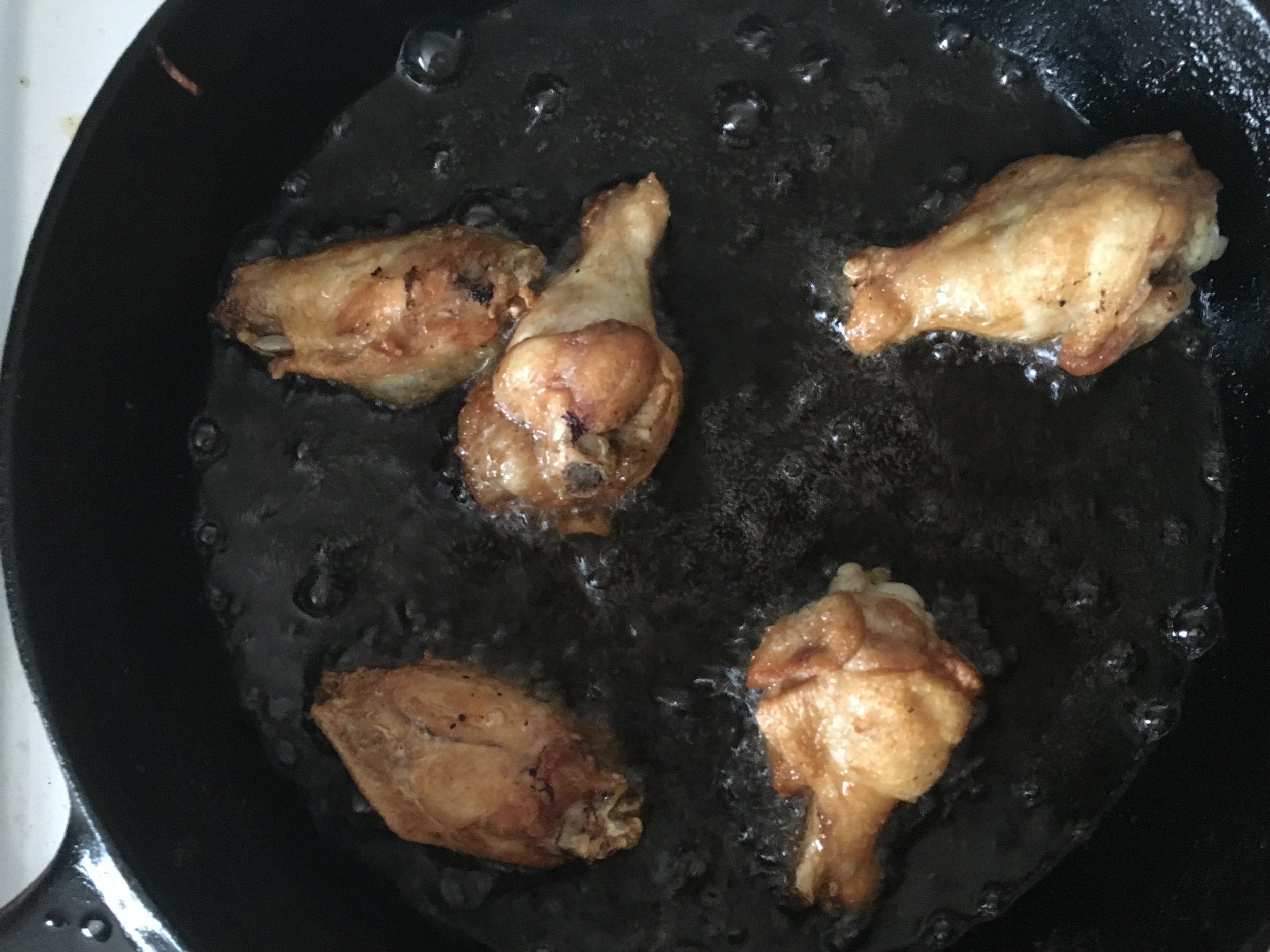 Place chicken wings in the oil, and let fry. If the oil doesn’t completely cover the chicken, just turn the wings over every 2 minutes. Don’t over crowd the pan, you’re better off doing small batches, so the oil will stay hot.
Place chicken wings in the oil, and let fry. If the oil doesn’t completely cover the chicken, just turn the wings over every 2 minutes. Don’t over crowd the pan, you’re better off doing small batches, so the oil will stay hot.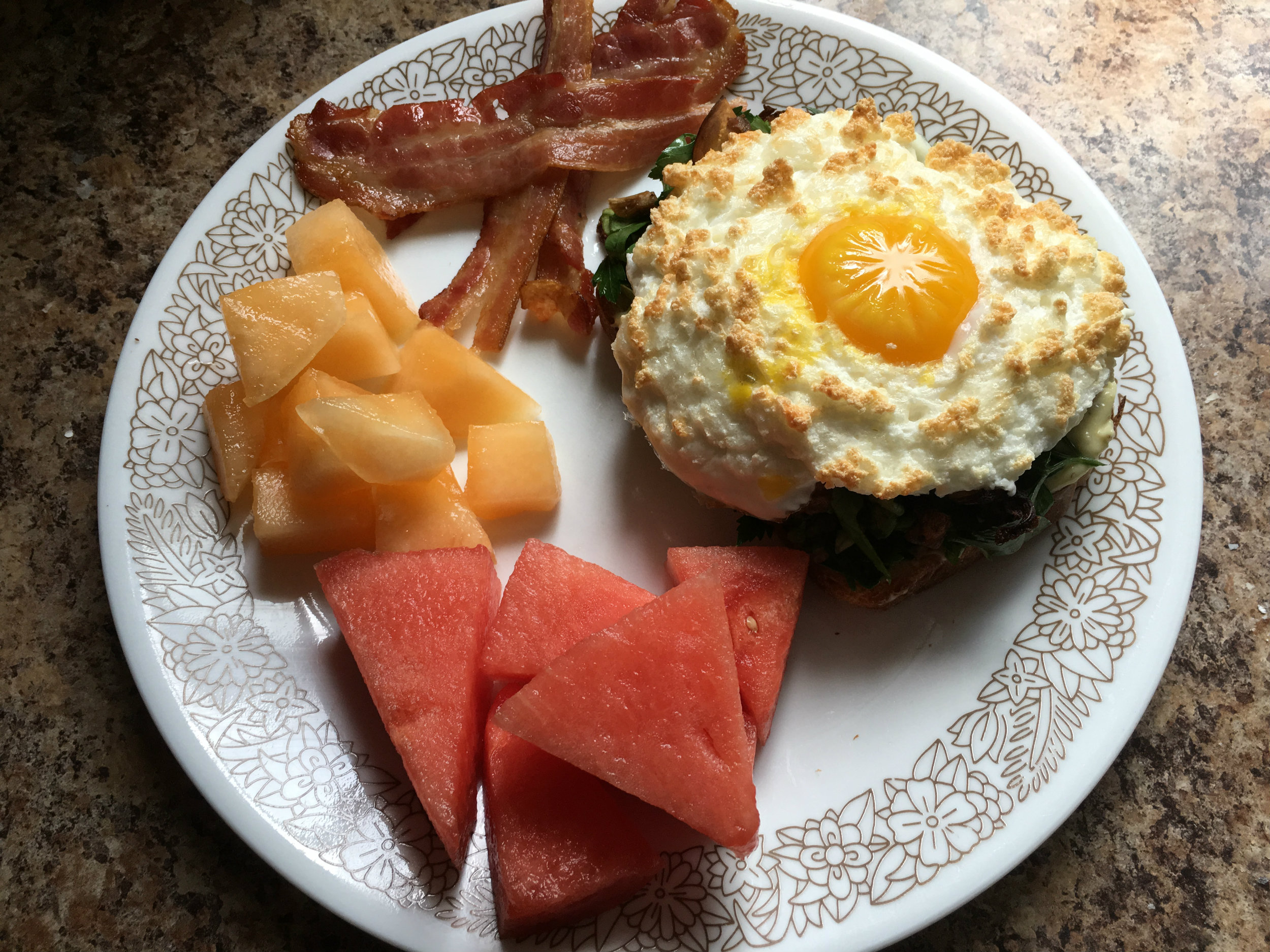
 While the oven and the baking sheet are preheating, slice the mushrooms, you want them about 1/8″ thick and place them into a bowl.
While the oven and the baking sheet are preheating, slice the mushrooms, you want them about 1/8″ thick and place them into a bowl. Mix the Sugar into the Red Wine Vinegar until it’s
Mix the Sugar into the Red Wine Vinegar until it’s Divide the meringue into two piles on a parchment lined baking sheet. Use a spoon to put a dip in the middle of each one.
Divide the meringue into two piles on a parchment lined baking sheet. Use a spoon to put a dip in the middle of each one.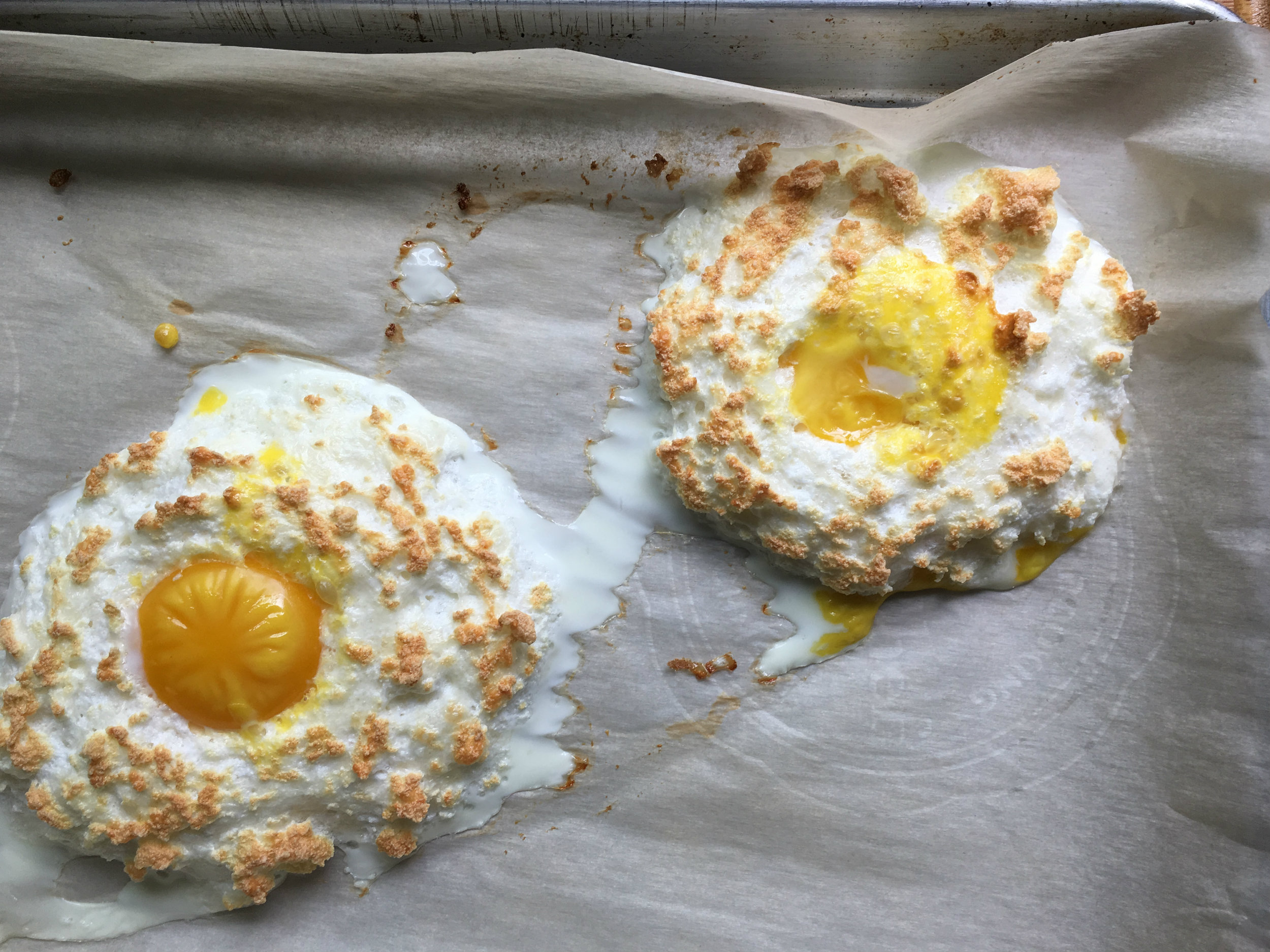 Place eggs on the side, put 2 pieces of bread in the toaster and make toast.
Place eggs on the side, put 2 pieces of bread in the toaster and make toast. Put your dried basil in a 325 degree convection oven (or 350 non convection) on a parchment lined baking sheet for 30 minutes, or until Basil becomes fragrant.
Put your dried basil in a 325 degree convection oven (or 350 non convection) on a parchment lined baking sheet for 30 minutes, or until Basil becomes fragrant.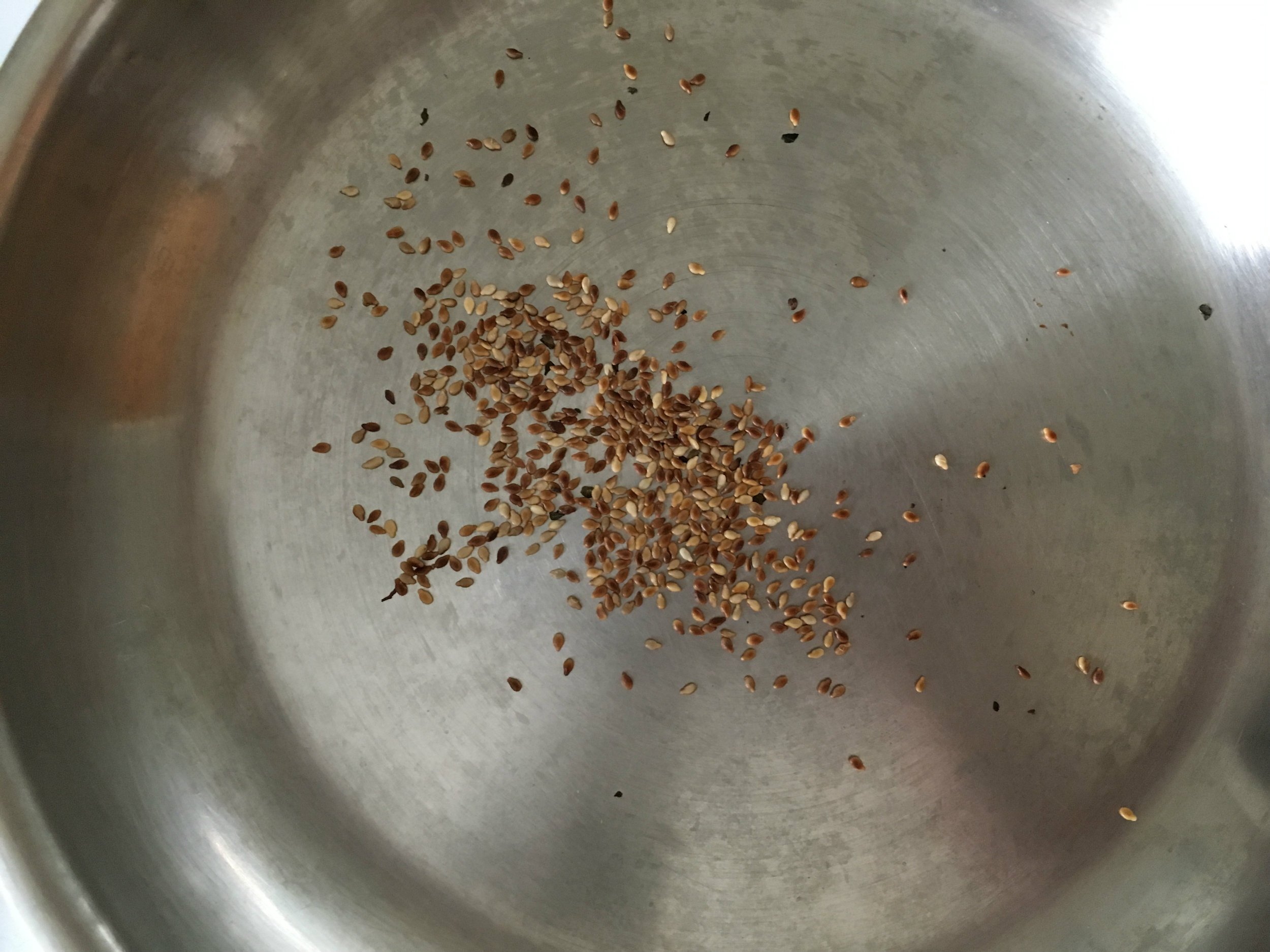 Put half of the Sesame seeds in a dry frying pan set to medium high heat.
Put half of the Sesame seeds in a dry frying pan set to medium high heat.
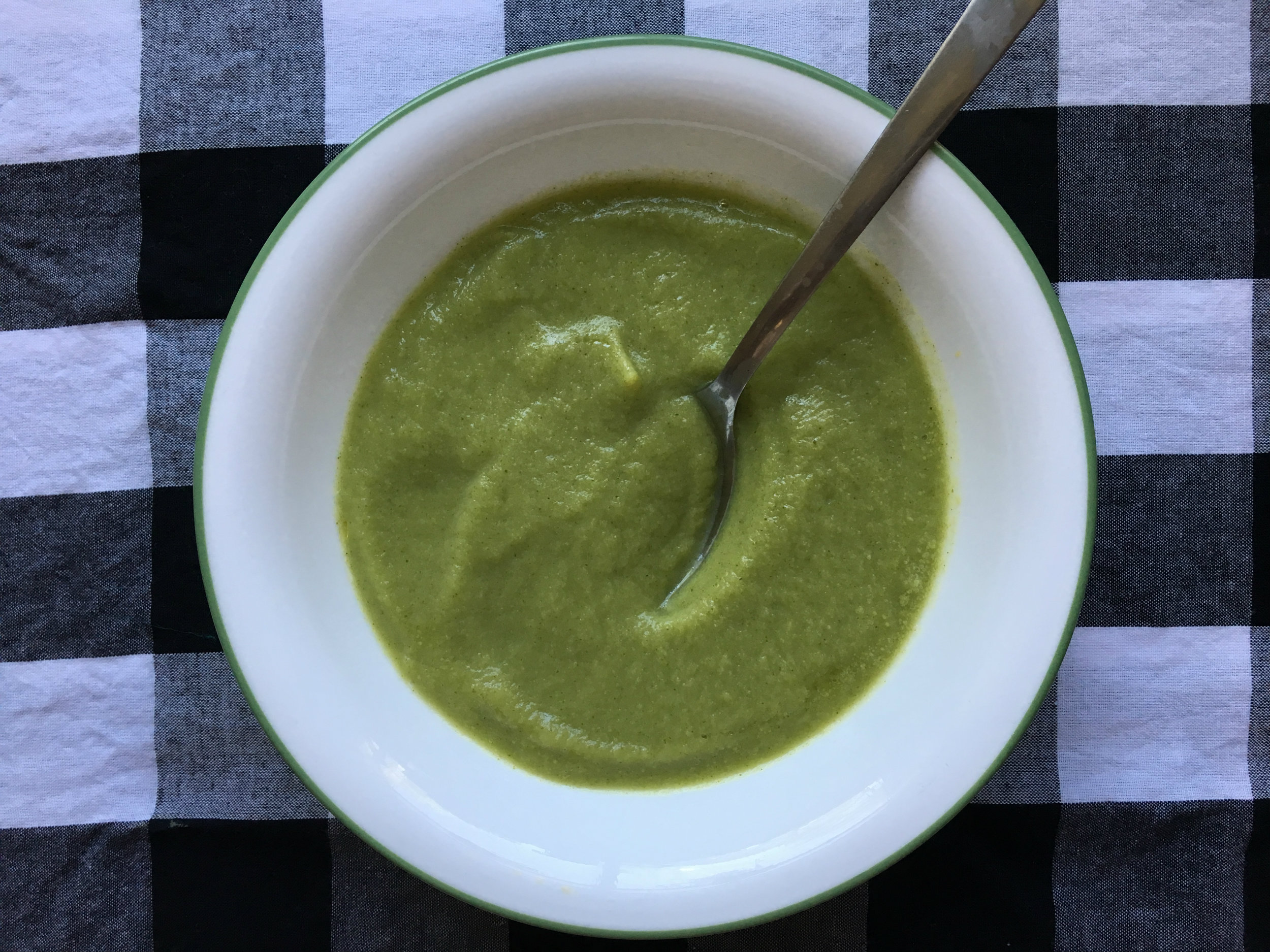
 Let your ribs sit out for about 30 mins, it’s easier to work with at room temperature.
Let your ribs sit out for about 30 mins, it’s easier to work with at room temperature.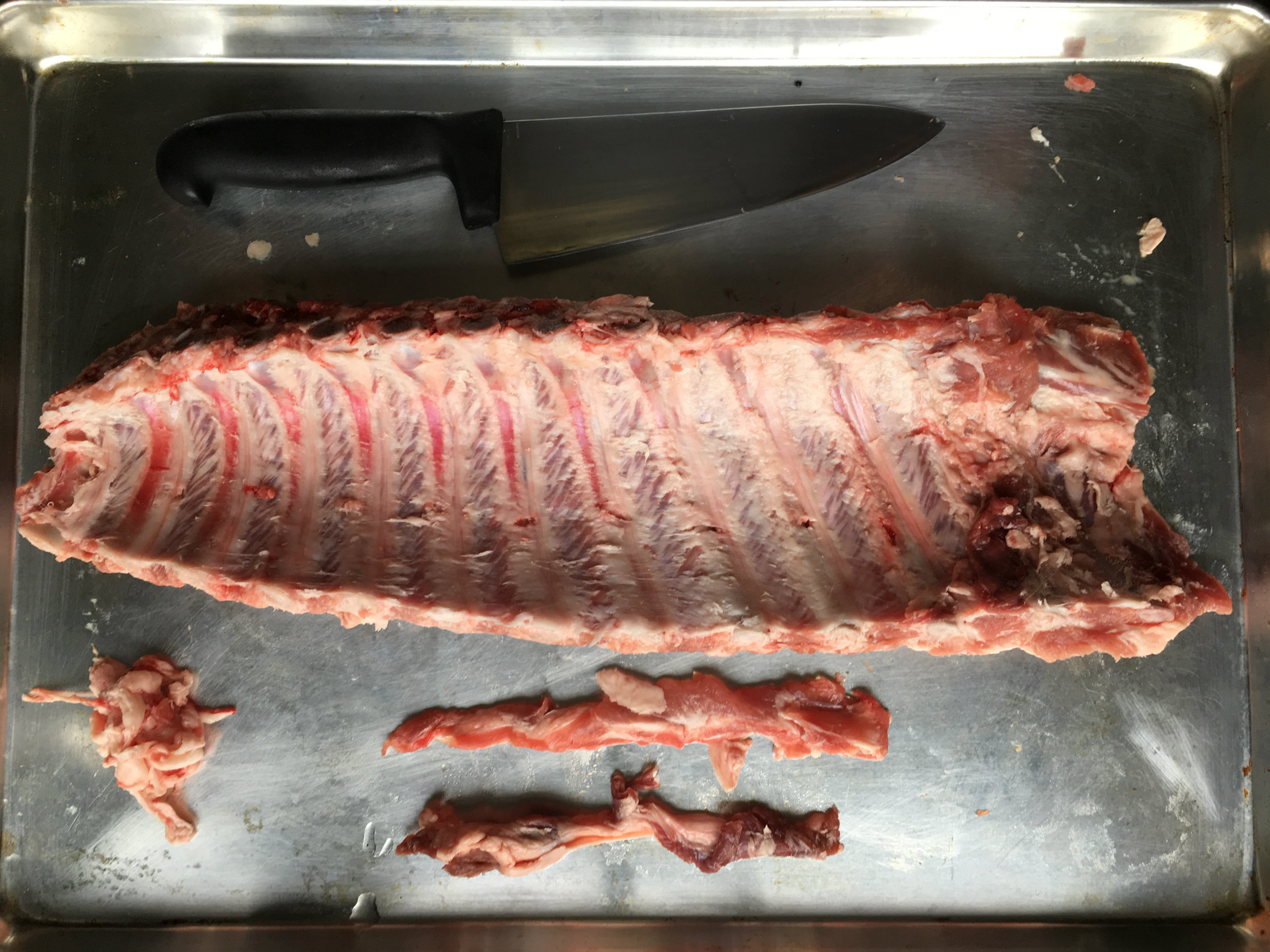 Trim your ribs of any extra “flabs” of meat. these will cook too fast, and generally be unappealing, also you want to remove the pulmonary pleura (Aka the thick membrane on the concave side of the ribs). There are some myths that this prevents flavour from penetrating into the meat, but that isn’t true. It does however create a chewy texture. You can remove it by using a knife to poke a hole in the membrane in the corner, and using your finger to pull it off. It should come off as one piece.
Trim your ribs of any extra “flabs” of meat. these will cook too fast, and generally be unappealing, also you want to remove the pulmonary pleura (Aka the thick membrane on the concave side of the ribs). There are some myths that this prevents flavour from penetrating into the meat, but that isn’t true. It does however create a chewy texture. You can remove it by using a knife to poke a hole in the membrane in the corner, and using your finger to pull it off. It should come off as one piece.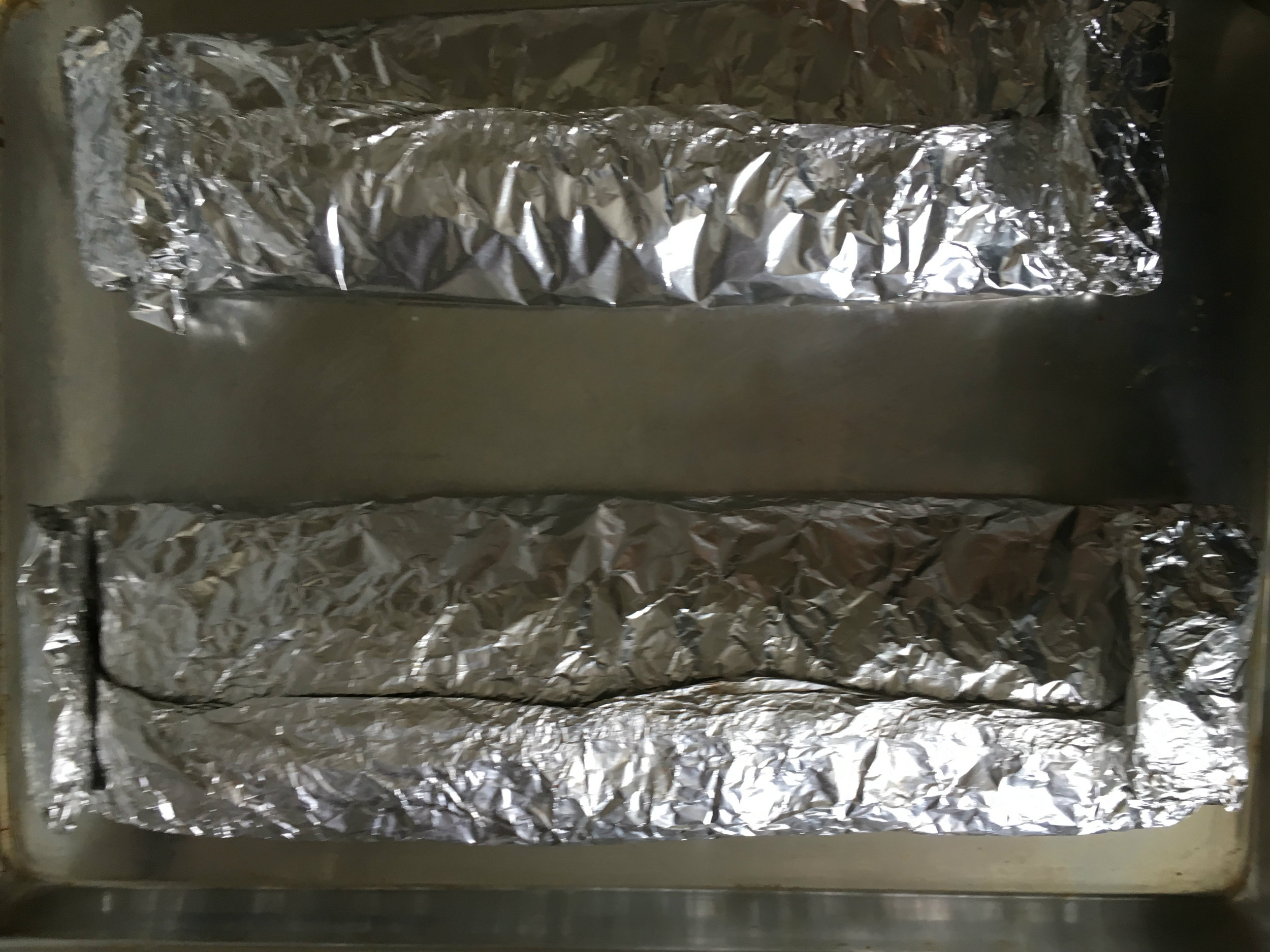 Place your ribs on top of wide heavy duty aluminum foil so the concave side is down. You want to wrap them so you have a tight seam on top of the ribs. Then tightly roll up one side of the foil, and loosely roll up the other.
Place your ribs on top of wide heavy duty aluminum foil so the concave side is down. You want to wrap them so you have a tight seam on top of the ribs. Then tightly roll up one side of the foil, and loosely roll up the other.